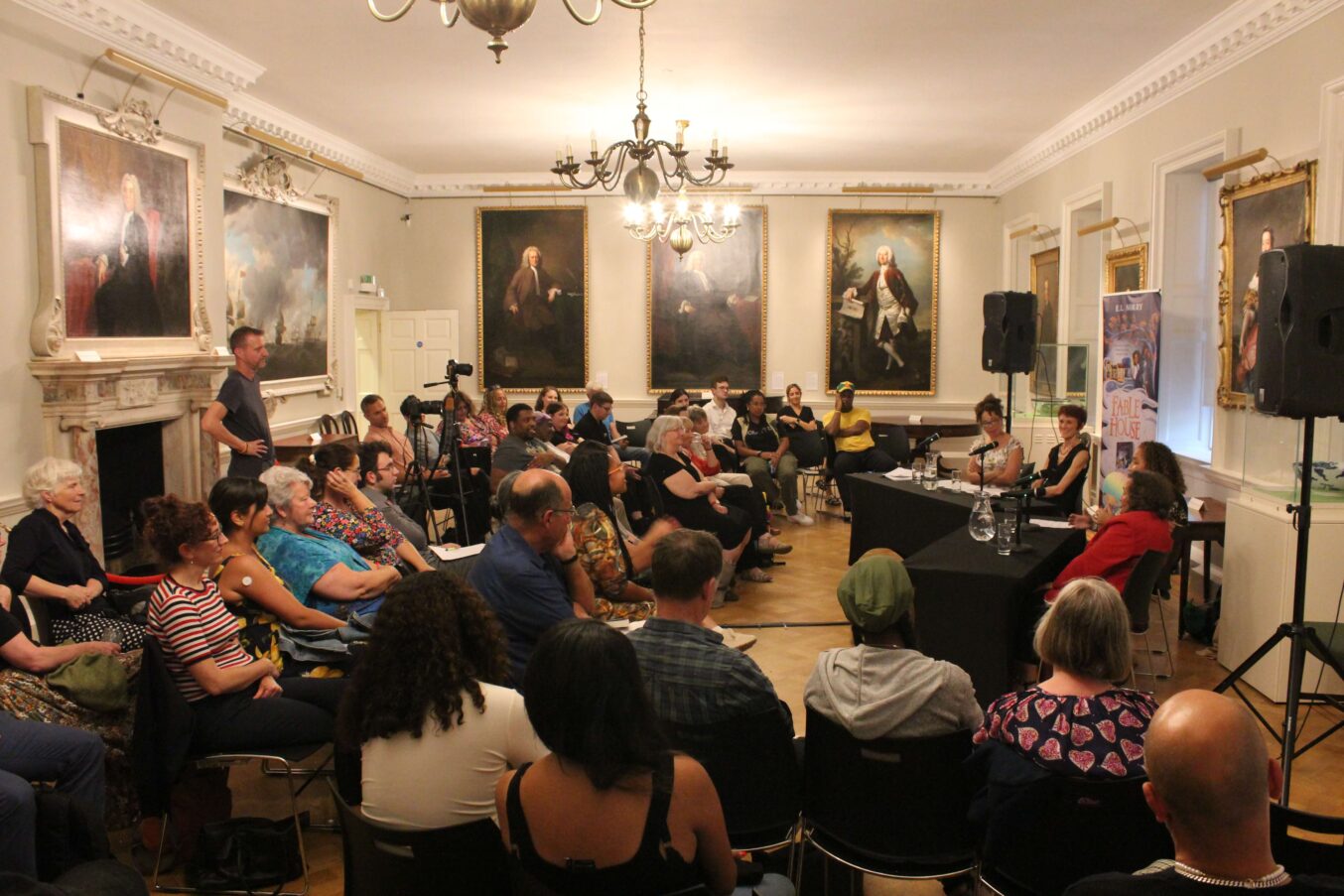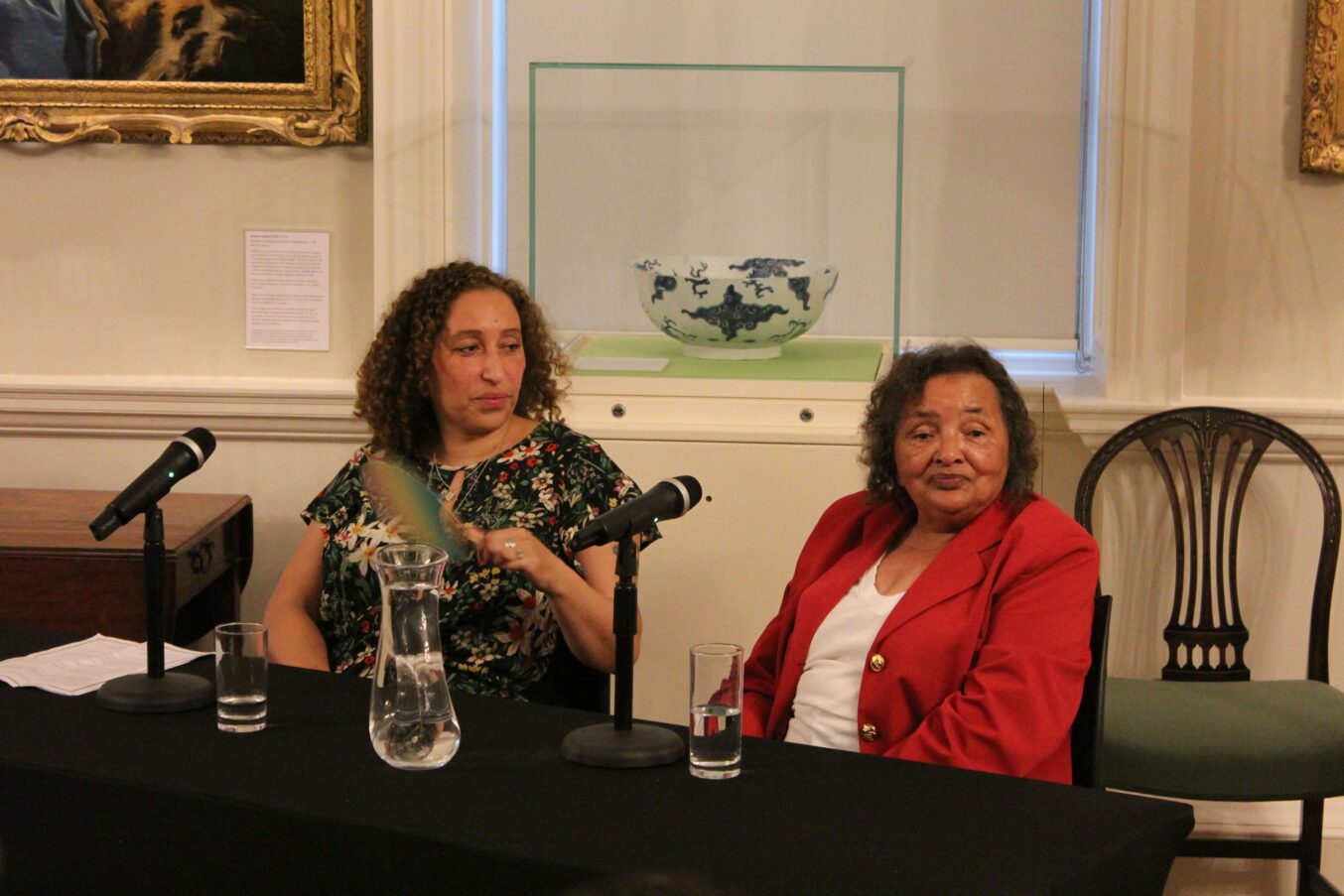“This history needs to be known”
Former Holnicote House resident Ann Evans joined our Director Dr Chamion Caballero, historian Professor Lucy Bland and Fablehouse author E. L. Norry for a panel discussion exploring the painful and joyful lives of the ‘brown babies’ born in Britain during World War Two – and how their experiences are echoed by children in care today.
See the video of the panel discussion below!

“I never thought this would be possible, any more than I thought Barack Obama would be president of the United States” was how Ann Evans described seeing part of her life inspire a new children’s book.
The former resident of Holnicote House was speaking at an event hosted by The Mixed Museum to mark the publication of Fablehouse – a new children’s book, published by Bloomsbury Children’s Books, inspired by the real-life childhoods of Ann and other mixed children at the residential nursery in Somerset.
Around 60 people attended the panel discussion at The Foundling Museum in London, held in partnership between the two museums, Bloomsbury and Anglia Ruskin University. Chaired by Dr Chamion Caballero, Director of The Mixed Museum, the discussion also featured historian and author of Britain’s Brown Babies, Professor Lucy Bland, and Fablehouse author E. L. (Emma) Norry.
A painful history

Lucy explained that the rules governing the US Army during World War Two prevented the Black GIs from marrying their white British girlfriends. “If there was a sniff of a relationship, the commanding officer would say, ‘We can do you for rape’. The punishment for that was hanging.” It was common for soldiers to be moved away to prevent relationships from continuing.
Lucy, who spoke to 60 of the mixed people who resulted from these relationships – dubbed the ‘brown babies’ by the American press – said there are estimated to be around 2,000 such children born during World War Two.
She said their white mothers faced huge pressure from their families and wider society to give them up. “It was very hard for the mothers,” she said. “They were up against huge odds to hang onto their children.”
While around half were taken in by children’s homes, she said, others were brought up with their mothers, and others still were taken in by other family members, often grandmothers. “I know of a few cases where the children thought their grandmother was their mother,” she said.
Where fathers tried to keep in touch with children from the US, their letters were often destroyed by family members.

Bringing back memories
Asked how she understood her mixed identity as a child, Ann said: “No-one ever talked about it. It wasn’t the done thing. I did learn to fight though. One of my adopted brothers told me, ‘Anyone says anything, you make a fist like this and punch them in the face’, which I did on a regular basis.”
She remembered a happy time at Holnicote House, with 20 other mixed children, all of whom were “good friends”, and she was later adopted in a “very loving family”.
Although they grew up more than 20 years apart, in different parts of the UK, both Ann and Emma – who also spent her childhood in care – remembered staff who were unable to care for their hair. “It was a case of trying to pretend you were ill,” said Ann. “The pain of those steel Afro combs,” added Emma. “And no conditioner in sight!”

Building a legacy
Asked how she hoped the stories brought to life in her book Fablehouse might continue to be told, Emma said: “It’s only valuable if the conversation carries on. Being mixed race, there can be a lot of shame and a lot of stigma and it isn’t easy to talk about, but nothing changes unless you have these conversations.” “This history needs to be known,” agreed Lucy. “It needs to be part of the school curriculum.”
“What has been great is doing school visits to talk about the book,” added Emma. “I was telling one class that if they wanted to know more, they could visit The Mixed Museum, and one girl said, ‘I don’t go to no museums’. And I said, ‘You don’t need to go anywhere, it’s online!’.”
A Q&A session after the panel discussion brought rich contributions from the audience, including several who were directly related either to ‘brown babies’ or to their mothers.
Chamion Caballero, Director of The Mixed Museum, said: “The amazing turn-out and diverse experiences of the audience shows there is a huge appetite for spaces to share and learn about these histories. The love for Ann from the room in particular was incredible. Such an honour to hear directly from her about the ‘brown babies’ history, as well as from Emma on how Ann’s life and that of other Holnicote House children inspired her fiction.
“The Q&A afterwards was both joyful and emotional, and clearly showed how needed such spaces are. We had people coming up to us after the event wanting us to explore other histories, such as Anglo-Indian experiences and children born to Native American GI fathers. It was wonderful seeing people’s enthusiasm and ideas - we’ll do our best to bring many more of these stories to the fore.”
The Mixed Museum team would love to be able to explore these topics further. If you would like to partner with or sponsor us to do so, please get in touch.
Learn more
Watch the film of the panel discussion on our YouTube channel
Fablehouse is out now. Fablehouse 2 will be published by Bloomsbury in April 2024
The Finding Family exhibition, which explores notions of the family through art from the 17th century to the present day, is on at the Foundling Museum until 27 August 2023
Visit our Britain’s Brown Babies exhibition
